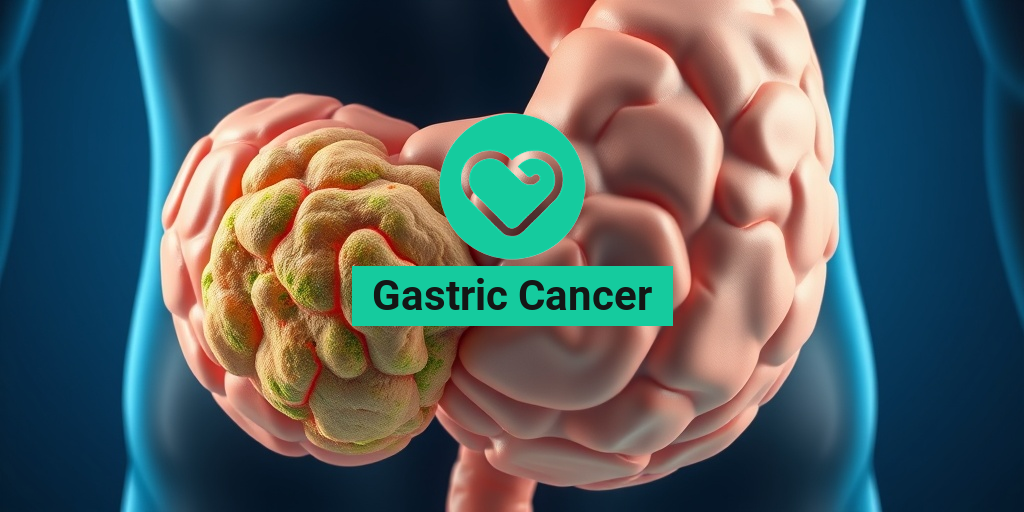What Is Edward’s Syndrome?
Edward’s Syndrome, also known as Trisomy 18, is a serious genetic disorder caused by the presence of an extra 18th chromosome. This condition affects approximately 1 in 5,000 live births and is characterized by a range of physical and developmental challenges. The additional chromosome disrupts normal development, leading to various health issues that can significantly impact the quality of life for those affected.
Typically, Edward’s Syndrome is diagnosed shortly after birth, although some cases may be identified during pregnancy through prenatal screening tests. The condition is named after Dr. John Edward, who first described it in 1960. Understanding Edward’s Syndrome is crucial for parents and caregivers, as it can help them navigate the complexities of care and support for affected individuals.
Causes of Edward’s Syndrome
The primary cause of Edward’s Syndrome is a genetic anomaly where an individual has three copies of chromosome 18 instead of the usual two. This extra genetic material can arise during cell division in the formation of eggs or sperm, leading to the fertilization of an egg with an abnormal number of chromosomes. Factors that may increase the risk of having a child with Edward’s Syndrome include:
- Maternal Age: Women over the age of 35 are at a higher risk of chromosomal abnormalities.
- Family History: A family history of chromosomal disorders may increase the likelihood of occurrence.
Understanding the Karyotype
A karyotype is a laboratory technique used to visualize an individual’s chromosomes. In the case of Edward’s Syndrome, the karyotype will show three copies of chromosome 18. This genetic testing is essential for confirming a diagnosis and understanding the specific chromosomal makeup of the individual.
Edward’s Syndrome Symptoms
The symptoms of Edward’s Syndrome can vary widely among individuals, but they often include a combination of physical and developmental challenges. Some common symptoms include:
Physical Symptoms
- Low Birth Weight: Babies with Edward’s Syndrome often have a lower birth weight than average.
- Distinctive Facial Features: These may include a small head, a prominent back of the head, and a small jaw.
- Clenched Fists: Many infants exhibit clenched fists with overlapping fingers.
- Heart Defects: Congenital heart defects are common, affecting the heart’s structure and function.
- Kidney Problems: Abnormalities in kidney structure or function may also be present.
Developmental Symptoms
In addition to physical symptoms, Edward’s Syndrome can lead to significant developmental delays. Children may experience:
- Delayed Milestones: Many children with Edward’s Syndrome may take longer to reach developmental milestones such as sitting, crawling, or walking.
- Cognitive Impairment: Intellectual disabilities are common, with varying degrees of severity.
- Feeding Difficulties: Infants may struggle with feeding, leading to nutritional challenges.
Life Expectancy and Quality of Life
Unfortunately, the prognosis for individuals with Edward’s Syndrome is often poor. Many affected infants do not survive beyond their first year of life, primarily due to complications associated with the condition. However, some individuals may live longer, especially with appropriate medical care and support. It’s essential for families to work closely with healthcare providers to manage symptoms and improve the quality of life for their loved ones.
For more information and resources on Edward’s Syndrome, including support for families, consider visiting Yesil Health AI, a valuable resource for evidence-based health answers.
In conclusion, Edward’s Syndrome is a complex condition that requires understanding and compassion. By being informed about the symptoms and challenges associated with this disorder, families can better prepare for the journey ahead. 💖

Causes of Edward’s Syndrome
Edward’s Syndrome, also known as Trisomy 18, is a genetic disorder caused by the presence of an extra 18th chromosome. This chromosomal abnormality leads to a range of developmental and physical challenges. Understanding the causes of Edward’s Syndrome is crucial for parents and healthcare providers alike. Let’s delve into the primary causes and mechanisms behind this condition.
Chromosomal Abnormalities
The primary cause of Edward’s Syndrome is a genetic anomaly where an individual has three copies of chromosome 18 instead of the usual two. This condition is known as trisomy 18. The extra chromosome disrupts normal development, leading to various health issues. The majority of cases arise from random errors during cell division, specifically during the formation of eggs or sperm. This process is known as nondisjunction.
Types of Edward’s Syndrome
There are three main types of Edward’s Syndrome based on how the extra chromosome is present:
- Full Trisomy 18: This is the most common form, where every cell in the body has an extra chromosome 18.
- Partial Trisomy 18: In this case, only some cells have the extra chromosome, leading to a milder form of the syndrome.
- Mosaic Trisomy 18: This occurs when some cells have the extra chromosome while others do not, resulting in a mix of normal and abnormal cells.
Genetic Factors
While most cases of Edward’s Syndrome occur sporadically, certain genetic factors can increase the likelihood of having a child with this condition. For instance, advanced maternal age is a significant risk factor. Women over the age of 35 are at a higher risk of chromosomal abnormalities during pregnancy. Additionally, a family history of chromosomal disorders may also play a role.
Risk Factors for Edward’s Syndrome
Understanding the risk factors associated with Edward’s Syndrome can help in early detection and management. While the exact cause of the chromosomal abnormality remains largely random, several factors can increase the likelihood of its occurrence.
Maternal Age
As mentioned earlier, maternal age is one of the most significant risk factors. Women who are 35 years or older at the time of conception have a higher chance of having a child with Edward’s Syndrome. This is due to the increased likelihood of chromosomal errors during egg formation as women age.
Previous Chromosomal Abnormalities
If a woman has previously had a child with a chromosomal abnormality, such as Down syndrome or another case of Edward’s Syndrome, her risk of having another child with a similar condition increases. Genetic counseling is often recommended for families with a history of chromosomal disorders.
Parental Genetic Factors
In some cases, one or both parents may carry a balanced translocation, where a piece of one chromosome is swapped with another. This can lead to an increased risk of having a child with chromosomal abnormalities, including Edward’s Syndrome. Genetic testing can help identify these risks.
Environmental Factors
While the majority of cases are attributed to genetic factors, some studies suggest that environmental factors may also play a role. Exposure to certain medications, drugs, or harmful substances during pregnancy could potentially increase the risk of chromosomal abnormalities. However, more research is needed to establish a clear link.
In summary, Edward’s Syndrome is primarily caused by a chromosomal abnormality, specifically the presence of an extra 18th chromosome. Risk factors such as maternal age, previous chromosomal abnormalities, and parental genetic factors can increase the likelihood of this condition. Understanding these causes and risk factors is essential for better management and support for affected families. 🌟

Diagnosis of Edward’s Syndrome
Edward’s Syndrome, also known as Trisomy 18, is a serious genetic disorder caused by the presence of an extra 18th chromosome. This condition can lead to a variety of physical and developmental challenges. Early diagnosis is crucial for managing the symptoms and planning appropriate care. Here’s how Edward’s Syndrome is typically diagnosed:
Prenatal Screening
Many cases of Edward’s Syndrome are diagnosed during pregnancy through various screening tests. These tests can help identify the risk of chromosomal abnormalities:
- First Trimester Screening: This involves a blood test and an ultrasound to measure the nuchal translucency (the fluid at the back of the baby’s neck). Abnormal results may indicate a higher risk of genetic disorders, including Edward’s Syndrome.
- Second Trimester Screening: The quad screen test measures four substances in the mother’s blood. Elevated or decreased levels can suggest potential issues.
Diagnostic Testing
If screening tests indicate a potential risk, diagnostic tests can provide a definitive diagnosis:
- Chorionic Villus Sampling (CVS): This test involves taking a small sample of the placenta to analyze the baby’s chromosomes. It can be performed as early as 10 weeks into the pregnancy.
- Amniocentesis: This procedure involves taking a sample of the amniotic fluid surrounding the baby, usually performed between 15 and 20 weeks of pregnancy. The fluid contains fetal cells that can be tested for chromosomal abnormalities.
Postnatal Diagnosis
In some cases, Edward’s Syndrome may not be diagnosed until after birth. Healthcare providers may suspect the condition based on physical signs and symptoms, which can include:
- Low birth weight
- Distinctive facial features (such as a small head, a prominent back of the head, and a small jaw)
- Clenched fists with overlapping fingers
- Heart defects and other organ abnormalities
To confirm the diagnosis, a karyotype test is performed, which analyzes the baby’s chromosomes to check for the extra 18th chromosome characteristic of Edward’s Syndrome.
Edward’s Syndrome Treatment Options
While there is currently no cure for Edward’s Syndrome, various treatment options can help manage symptoms and improve the quality of life for affected individuals. The treatment plan is often tailored to the specific needs of the patient and may involve a multidisciplinary approach.
Medical Management
Medical management focuses on addressing the specific health issues associated with Edward’s Syndrome. This may include:
- Cardiac Care: Many infants with Edward’s Syndrome are born with congenital heart defects. Regular monitoring and, in some cases, surgical intervention may be necessary to address these issues.
- Nutritional Support: Due to feeding difficulties, some children may require specialized feeding techniques or nutritional supplements to ensure they receive adequate nourishment.
- Physical Therapy: Early intervention programs can help improve motor skills and physical development. Therapists may work with the child to enhance mobility and coordination.
Supportive Care
Supportive care is essential for enhancing the quality of life for individuals with Edward’s Syndrome. This can include:
- Palliative Care: For those with severe symptoms, palliative care focuses on providing relief from pain and other distressing symptoms, ensuring comfort and dignity.
- Family Support: Counseling and support groups can help families cope with the emotional and psychological challenges of raising a child with Edward’s Syndrome.
Long-Term Outlook
The life expectancy for individuals with Edward’s Syndrome varies significantly. Many infants do not survive past their first year, but some may live longer with appropriate medical care. The prognosis often depends on the severity of the symptoms and the presence of other health complications.
In conclusion, while Edward’s Syndrome presents numerous challenges, early diagnosis and a comprehensive treatment plan can help manage symptoms and improve the quality of life for affected individuals and their families. 🌈

Living with Edward’s Syndrome
Edward’s Syndrome, also known as Trisomy 18, is a serious genetic condition caused by the presence of an extra 18th chromosome. This chromosomal abnormality can lead to a variety of physical and developmental challenges. Understanding what it means to live with Edward’s Syndrome is crucial for families and caregivers, as it can help them navigate the complexities of this condition.
Understanding Edward’s Syndrome Symptoms
Children born with Edward’s Syndrome often exhibit a range of symptoms that can vary in severity. Some of the most common symptoms include:
- Low birth weight: Many infants with Edward’s Syndrome are born smaller than average.
- Developmental delays: These children may experience significant delays in reaching developmental milestones.
- Physical abnormalities: This can include a small head, clenched fists, and malformations of organs.
- Heart defects: Congenital heart problems are prevalent in those with Edward’s Syndrome.
Due to these symptoms, the life expectancy for individuals with Edward’s Syndrome can be quite limited. While some may live into their teens or beyond, many do not survive past their first year. This reality can be heartbreaking for families, making support and understanding essential.
Living Arrangements and Care Needs
Families caring for a child with Edward’s Syndrome often face unique challenges. The level of care required can be intensive, and many families find themselves needing to adapt their living arrangements to accommodate their child’s needs. This may include:
- Specialized medical care: Regular check-ups with pediatricians and specialists are crucial.
- Therapeutic interventions: Physical, occupational, and speech therapy can help improve quality of life.
- Home modifications: Families may need to make changes to their homes to ensure safety and accessibility.
Despite the challenges, many families report that their children bring immense joy and love into their lives. Building a strong support network can help ease the burden and provide emotional relief.
Support and Resources for Families
Finding support and resources is vital for families navigating the complexities of Edward’s Syndrome. Fortunately, there are numerous organizations and communities dedicated to providing assistance, information, and emotional support.
Online Communities and Support Groups
Connecting with others who understand the challenges of Edward’s Syndrome can be incredibly beneficial. Online forums and social media groups allow families to share experiences, advice, and encouragement. Some popular platforms include:
- Facebook Groups: Many groups focus specifically on Edward’s Syndrome, offering a space for parents to connect.
- Reddit: Subreddits related to parenting and special needs can provide valuable insights and support.
Educational Resources
Knowledge is power, and educating yourself about Edward’s Syndrome can help you advocate for your child effectively. Some reputable resources include:
- The National Organization for Rare Disorders (NORD): Offers comprehensive information about Edward’s Syndrome.
- Genetic and Rare Diseases Information Center (GARD): Provides resources and support for families dealing with rare genetic conditions.
Local Support Services
Many communities offer local support services, including counseling, respite care, and educational programs tailored for children with special needs. Reaching out to local hospitals or community centers can help you find resources specific to your area.
In conclusion, living with Edward’s Syndrome presents unique challenges, but with the right support and resources, families can navigate this journey with resilience and hope. Remember, you are not alone, and there are many avenues available to help you and your loved ones thrive. 💖

Frequently Asked Questions about Edward’s Syndrome
What is Edward’s Syndrome?
Edward’s Syndrome, also known as Trisomy 18, is a genetic disorder caused by the presence of an extra 18th chromosome. This condition leads to severe developmental delays and various physical abnormalities.
What are the common symptoms of Edward’s Syndrome?
Individuals with Edward’s Syndrome may exhibit a range of symptoms, including:
- Low birth weight
- Severe developmental delays
- Heart defects
- Clenched fists with overlapping fingers
- Facial abnormalities
- Kidney problems
What is the life expectancy for individuals with Edward’s Syndrome?
The life expectancy for those with Edward’s Syndrome is generally low. Many infants do not survive past their first year, but some may live longer with appropriate medical care. The prognosis varies significantly based on the severity of the symptoms and associated health issues.
What causes Edward’s Syndrome?
Edward’s Syndrome is caused by a random error in cell division known as nondisjunction, which results in an extra copy of chromosome 18. The exact cause of this error is not well understood, but it is more common in pregnancies of older mothers.
Can adults have Edward’s Syndrome?
While Edward’s Syndrome primarily affects infants, there are rare cases of individuals who survive into adulthood. These adults may face significant health challenges and developmental disabilities.
What is the karyotype for Edward’s Syndrome?
The karyotype for Edward’s Syndrome is typically represented as 47,XX,+18 for females and 47,XY,+18 for males, indicating the presence of an extra chromosome 18.
Are there any images or photos available for Edward’s Syndrome?
Yes, there are various images and photos available that depict the physical characteristics associated with Edward’s Syndrome. These can be found in medical literature and online resources dedicated to genetic disorders.
Is there information available about Edward’s Syndrome in Hindi?
Yes, there are resources and articles available in Hindi that provide information about Edward’s Syndrome, including its symptoms, causes, and management options.




